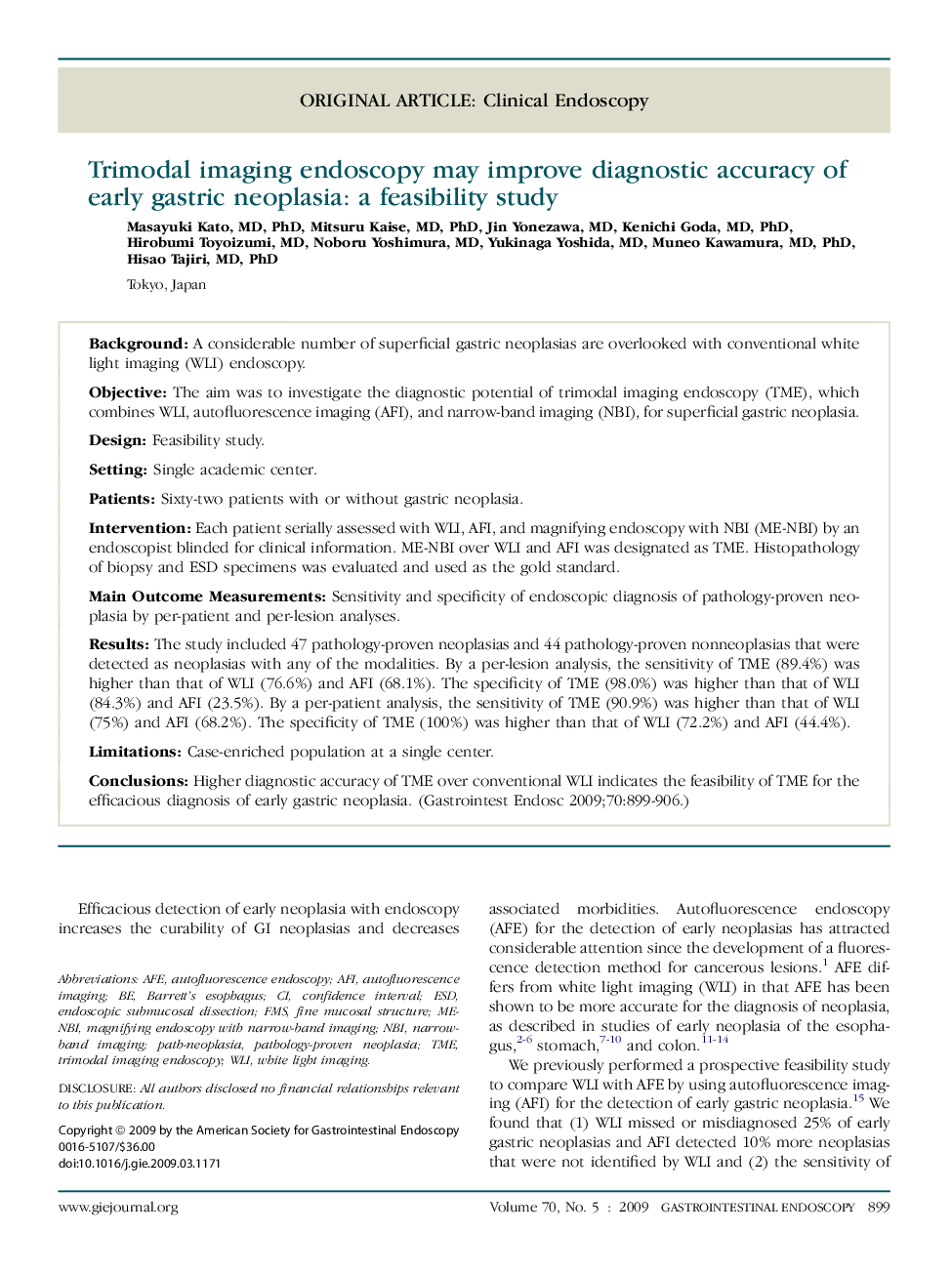| Article ID | Journal | Published Year | Pages | File Type |
|---|---|---|---|---|
| 3307515 | Gastrointestinal Endoscopy | 2009 | 8 Pages |
BackgroundA considerable number of superficial gastric neoplasias are overlooked with conventional white light imaging (WLI) endoscopy.ObjectiveThe aim was to investigate the diagnostic potential of trimodal imaging endoscopy (TME), which combines WLI, autofluorescence imaging (AFI), and narrow-band imaging (NBI), for superficial gastric neoplasia.DesignFeasibility study.SettingSingle academic center.PatientsSixty-two patients with or without gastric neoplasia.InterventionEach patient serially assessed with WLI, AFI, and magnifying endoscopy with NBI (ME-NBI) by an endoscopist blinded for clinical information. ME-NBI over WLI and AFI was designated as TME. Histopathology of biopsy and ESD specimens was evaluated and used as the gold standard.Main Outcome MeasurementsSensitivity and specificity of endoscopic diagnosis of pathology-proven neoplasia by per-patient and per-lesion analyses.ResultsThe study included 47 pathology-proven neoplasias and 44 pathology-proven nonneoplasias that were detected as neoplasias with any of the modalities. By a per-lesion analysis, the sensitivity of TME (89.4%) was higher than that of WLI (76.6%) and AFI (68.1%). The specificity of TME (98.0%) was higher than that of WLI (84.3%) and AFI (23.5%). By a per-patient analysis, the sensitivity of TME (90.9%) was higher than that of WLI (75%) and AFI (68.2%). The specificity of TME (100%) was higher than that of WLI (72.2%) and AFI (44.4%).LimitationsCase-enriched population at a single center.ConclusionsHigher diagnostic accuracy of TME over conventional WLI indicates the feasibility of TME for the efficacious diagnosis of early gastric neoplasia.
